Cappadocia (Kapadokya) in Three Days
Turkey — By Kelly on December 11, 2012 12:19 AMThe balloon ascended slowly with the rising sun. My sleepy eyes widened in wonder as our immense basket floated across the most unusual terrain I had ever seen. The earth below seemed alien, the scenery surreal. A sprawling lunar landscape of canyons, tall rock cliffs, and curious penile formations among a fertile valley blossoming cherry and apricot trees. I could make out the small windows and doors of cave houses chiseled into the rock hills, burrowed deep into the earth.
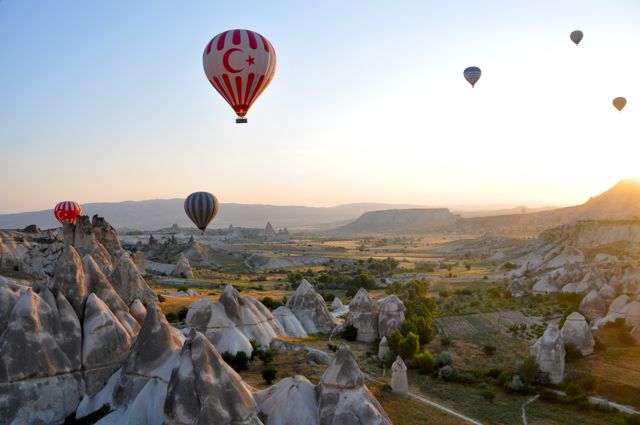
Balloon Turka
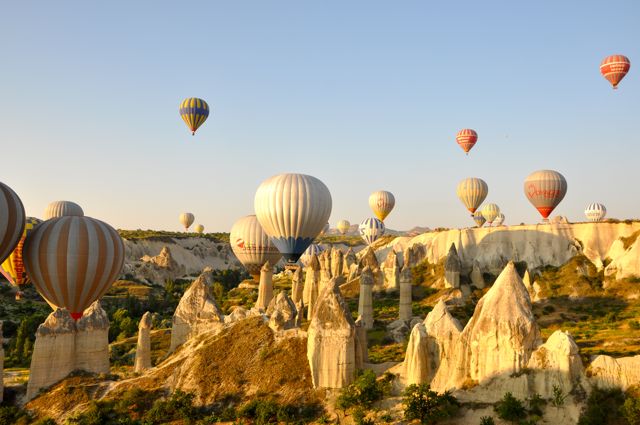
Floating over Fairy Chimneys
Dasha and I giggled as the captain glided low past the so called “fairy chimneys” sprouting out of the earth like phallic mushrooms with fierce erectness. As much as the region looks like a screen set of a very bizarre porn production staring Fred Flintstones, everything you see was made by mother nature … who apparently has a great sense of humor!
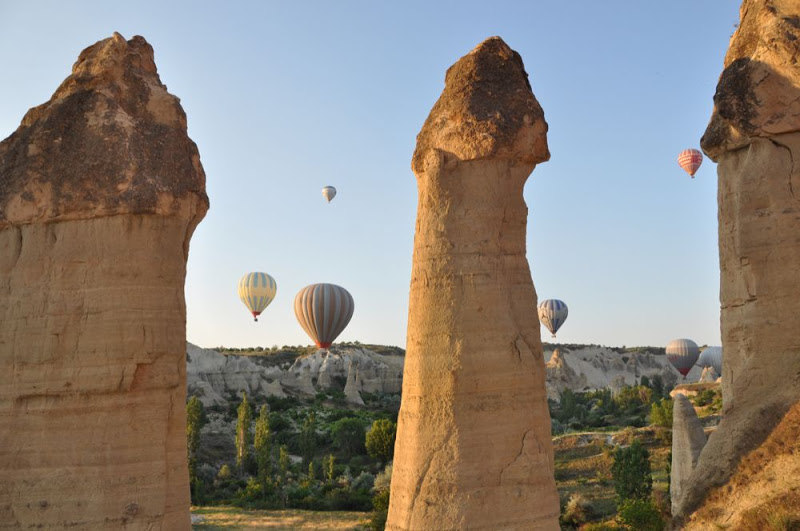
Fairy Chimneys
This magical land is Cappadocia (Kapadokya), located in central Turkey. The region’s enchanting landscape was created millions of years ago when volcanoes erupted blanketing ash across the region. The ash hardened into easily eroded material called tuff. Over time the tuff was transformed by water, wind, and temperature fluctuations that carved the terrain into a fantastic landscape and with astounding rock formations, most notable being the uncanny fairy chimneys. According to folk tales, fairies lived underground these chimneys. Our guide continued to refer to them as mushrooms formations, but our dirty minds could not be deterred.
Standing erect just beyond the Goreme open air is the valley of the super-sized shlong. Towering over 130 feet, these fairy chimneys are well endowed and will surely make the most confident of men have penis envy.
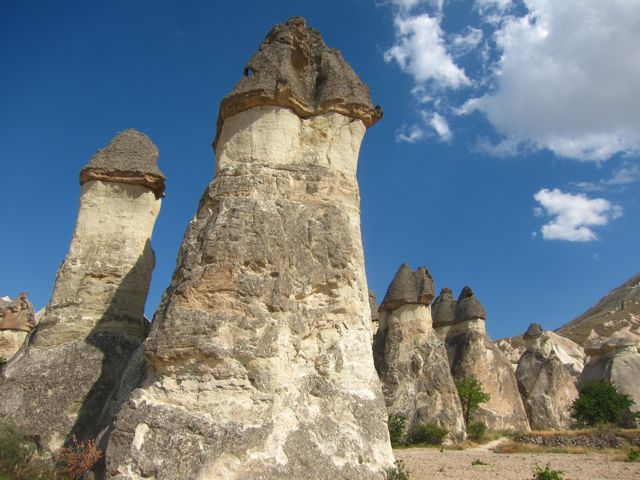
Super sized “fairy chimneys”

Uchisar Castle
Because the tuff is so soft, people have carved cave houses and underground cities out of the tuff. Why live in a cave besides the fact that it would be really cool? It is said that people in the ice age preferred to live in the caves to survive the harsh weather. Additionally cave towns functioned not only as dwelling but also as a defense fort.
Today the cave dwellers are predominately tourists staying in cave hotels. Dasha and I became cave dwellers ourselves and stayed two nights in Akhol Hotel in Mustafapasha, an old Greek village whose Greek inhabitants left during the population exchange of 1923.

Cave house
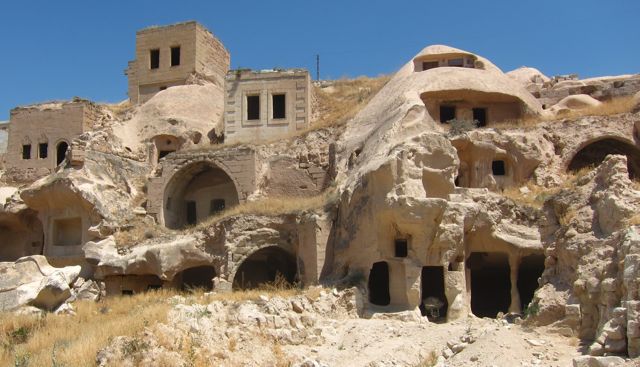
Cave houses
In the interest of time and needing transport to the sites, we booked a tour with Muşkara Tourism and Travel Agency. As much as I do not usually enjoy tours and try to avoid them whenever possible, I did learn much about the region from our guide Rejo and I believe that we were able to experience much of Cappadocia in three days. I will share our itinerary which was jam packed and exhausting. I would recommend allowing yourself four days if you have the time.
DAY 1 – Exploring Mustafapaşa
Mustafapaşa is an old Greek village in the Kapadokya region whose Greek inhabitants left during the Greek-Turkish population exchange of 1923. We did not pay for a tour this day and instead explored the village on our own.
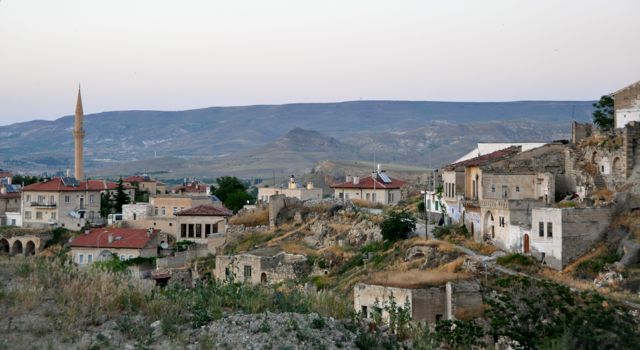
Mustafapaşa, Kapadoka

Mustafapaşa, Kapadoka

Mustafapaşa, Kapadoka
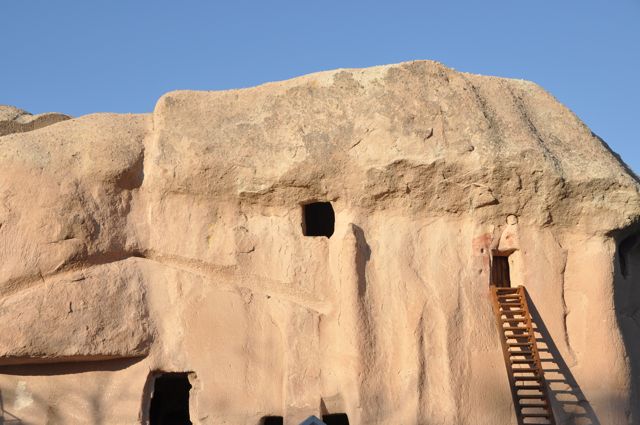
Monastery
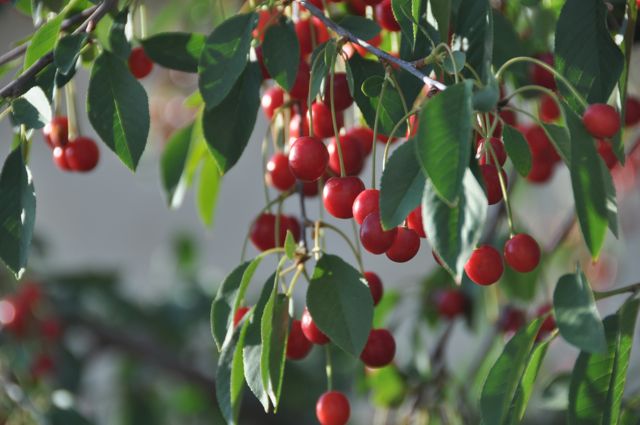
Turks and Kelly love cherry juice
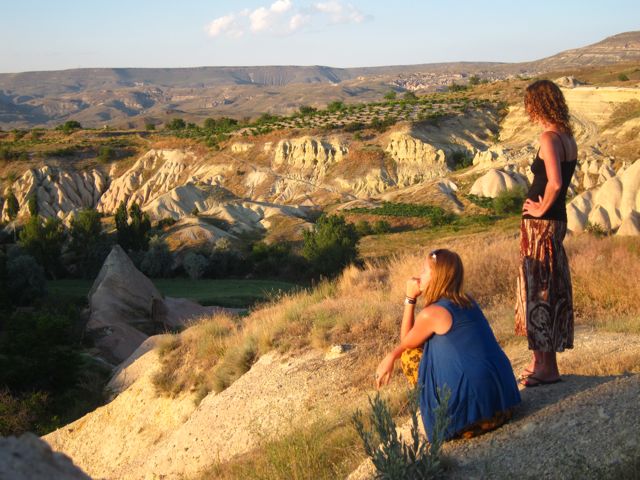
sunset over Gömede Valley, Mustafapaşa, Kapadoka
Day 2 – Uchisar Castle, Göreme open air museum, Pigeon Valley, Monks Valley, Avanos pottery center, Ürgüp fairy chimneys – Pasabagi, Rose Valley.
Start your morning with a sunrise hot air balloon tour. The ride is not cheap but is definitely worth the cost and is the absolute best way to take in the full spectrum of the region.
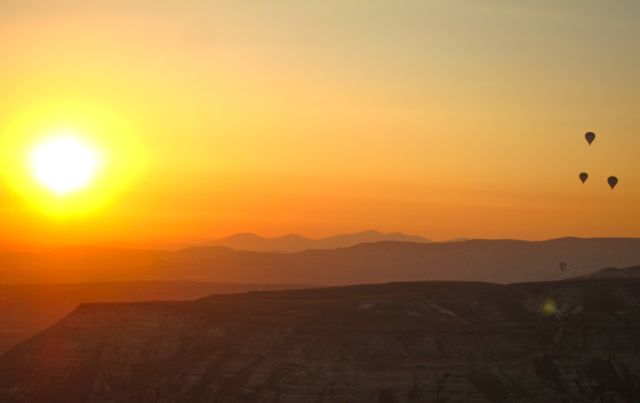
Watching the sunrise from high above
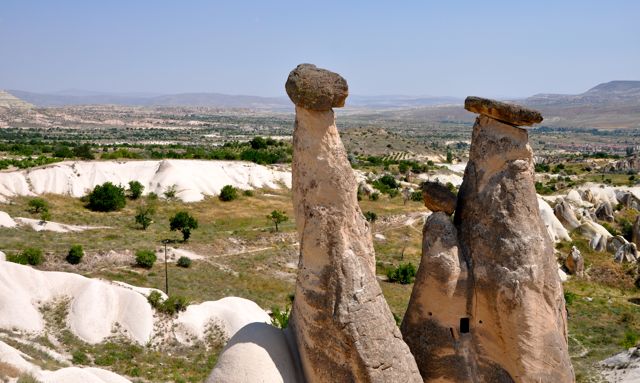
Three Pillars
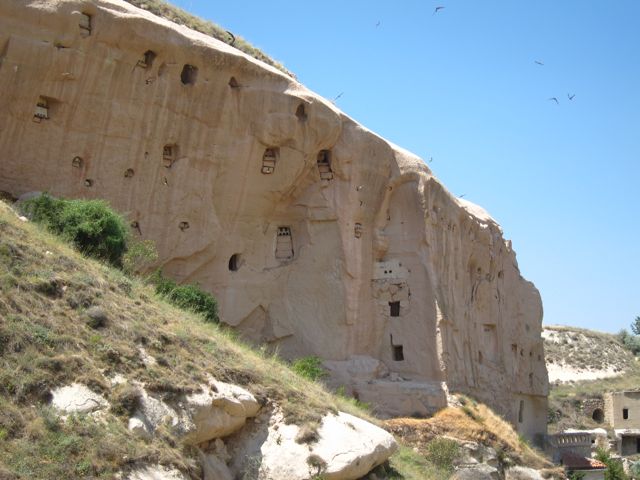
Pigeon coops cut into rock in Pigeon Valley. Pigeon egg shells to paint frescoes.
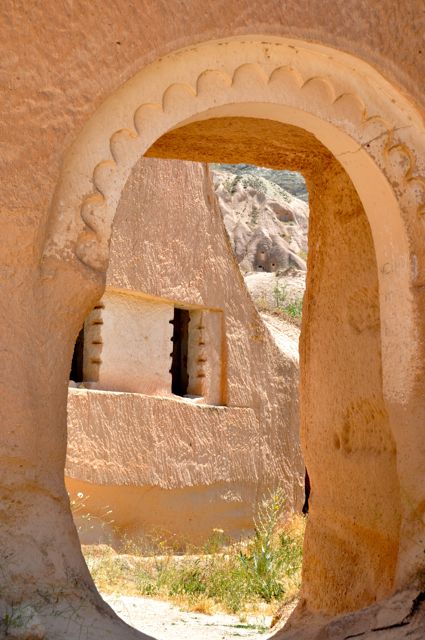
Pigeon Valley
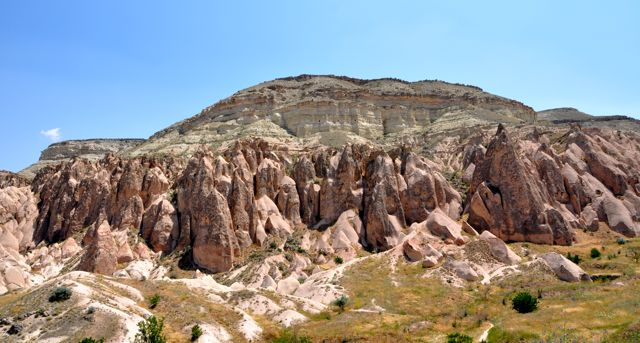
Rose Valley – where it is said rocks turn red in wintertime from the snow.
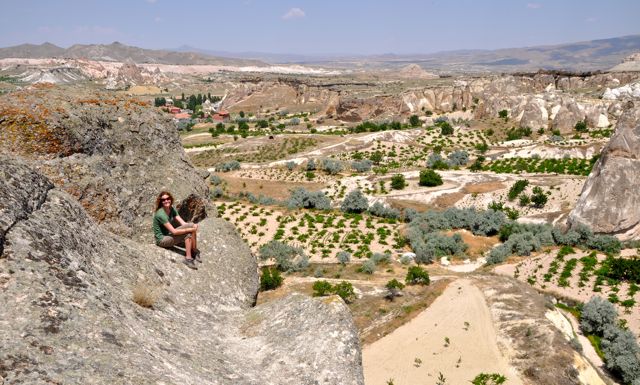
Rose Valley
The Goreme Open Air Museum has 30 churches built into the rocks and well preserved church frescoes inside.
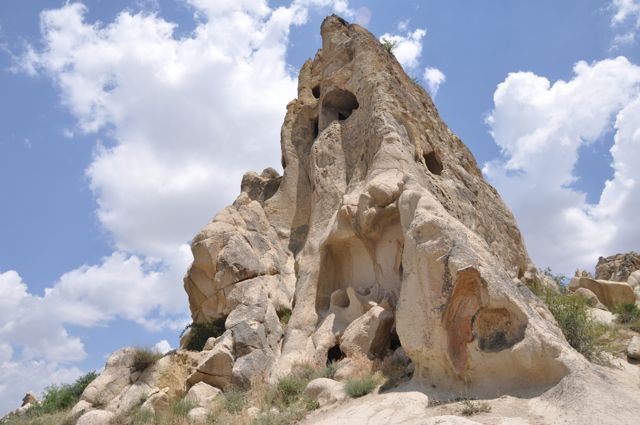
Göreme Open Air Museum

Hidden chapels adorned with frescoes
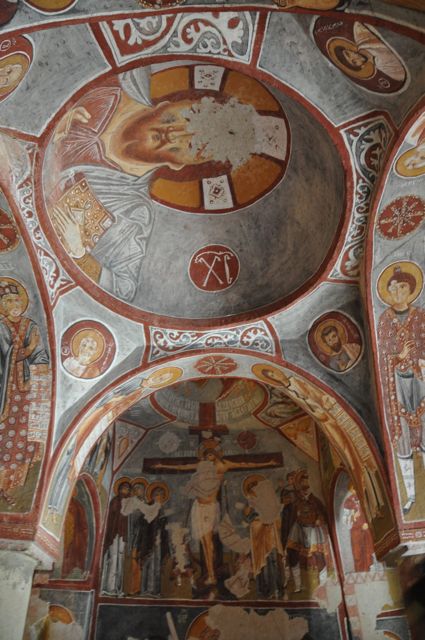
Well preserved church frescoes inside Göreme Open Air Museum .
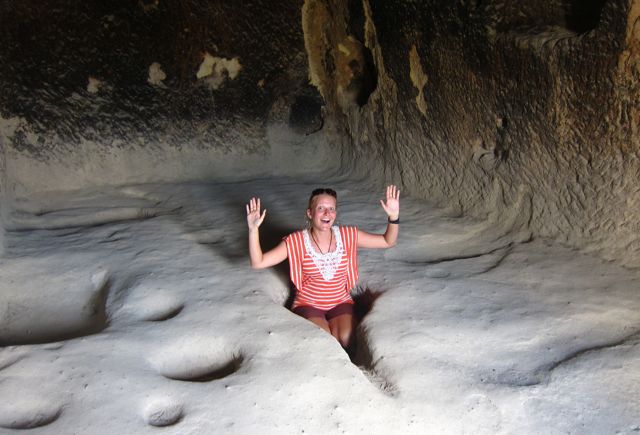
Dasha cooking in the oven!
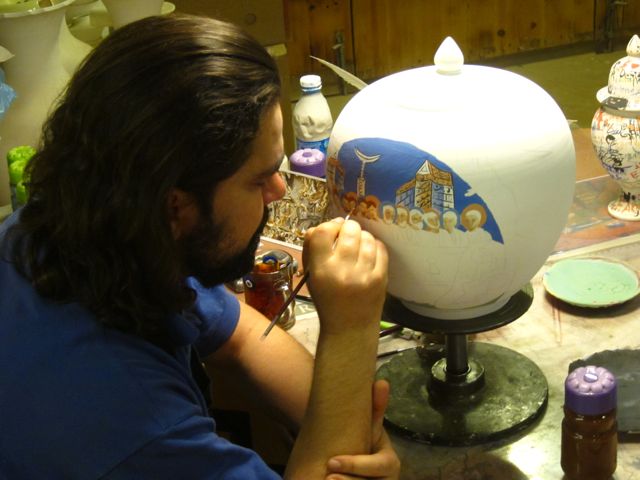
Avanos pottery center
DAY 3 – Underground City of Kaymakli, Ihlara Canyon, Selime Monastry
Underground cities were easy to excavate due to the softness of the tuff. But I had to wonder how these ancient dwellings of “soft tuff rock” could still exist today after thousands of years? According to Jeoffrey Lamec in his book “The Underground Cities of Cappadocia”, tufa rock can be shaped very easily but can become very hard and strong thanks to a thick protective layer that is formed within 48 hours after the shaped rock is exposed to oxygen.
The underground city of Kaymakli was home to over 2000 people, extended 7km to the next city and consisted of 30 levels with living quarters, stables, wells, ventilation systems and churches. The underground cities were designed to be self sufficient without the need to enter the outside world. Excavated during a time of unrest and war, the inhabitants were safe from the dangers of the outside world. The ends of the tunnels are blocked with a cylindrical millstones weighing 300 kilograms that the guard would roll in place to block the entry from invaders. As early as the third century, underground cities became a hiding place for early Christians who fled persecution from the Romans, and then later from Muslim raids.
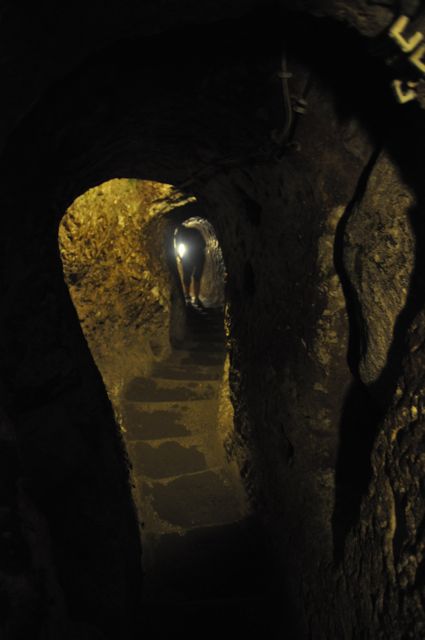
Underground City
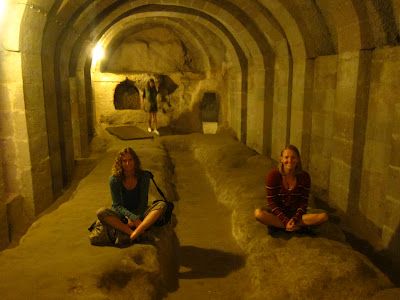
Underground School in underground city

Nar Lake
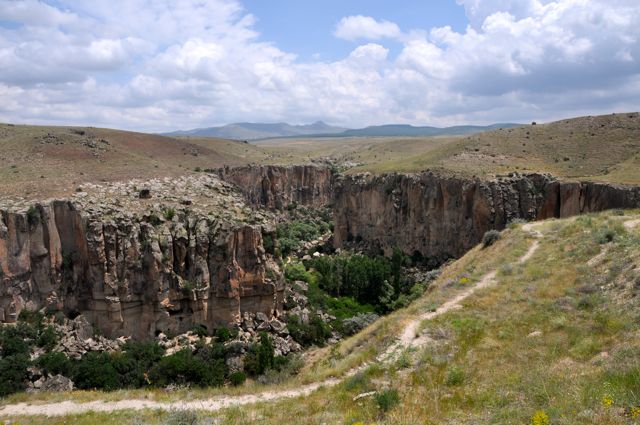
Ilhara Valley
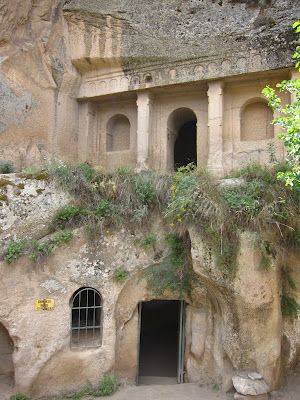
Church in Ilhara Valley
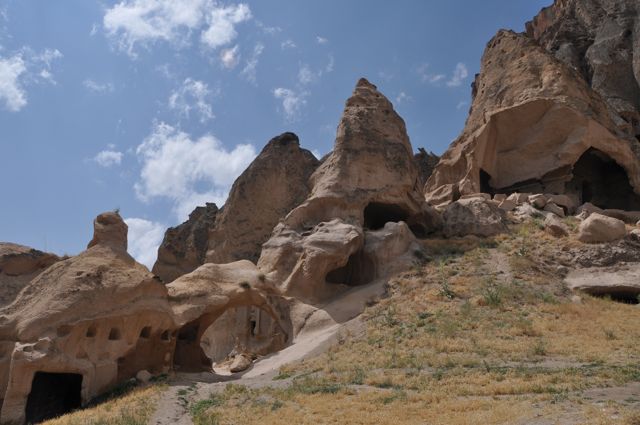
Selime Cathedral
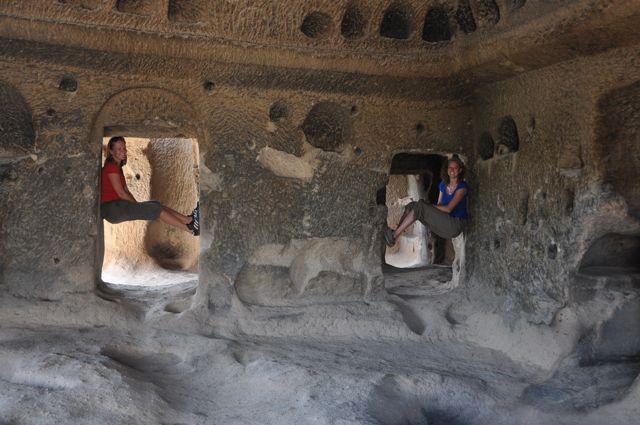
Inside Selime Cathedral
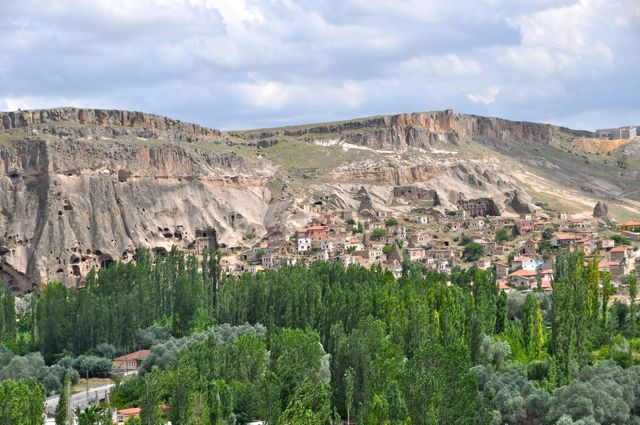
View from Selime Cathedral
To see more photos of Kapadokya CLICK HERE.
Tags: Cappadocia, hot air balloon, penile, tours, Turkey










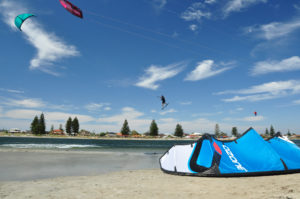

No Comments